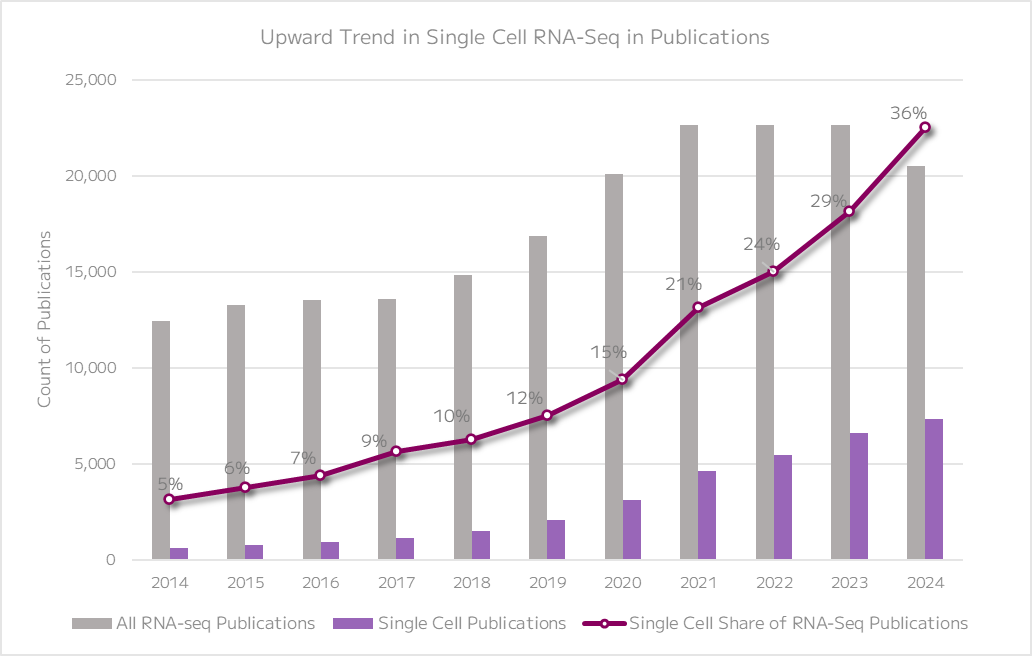When the applicant identifies measurable objectives and selects scRNA-Seq as the best technology, there are some additional guidelines to include when preparing for a successful scRNA-Seq grant proposal:
The most successful applications will contain all these elements. Addressing each directly exhibits completeness of consideration to the effort required, scoring well with reviewers.
Describe the scRNA-Seq Technology
Grant reviewers come from different backgrounds covering the various aspects of a grant application—not all of them may be versed in scRNA-Seq technology. The methods section is an opportunity to provide a complete description of the technology principles.
There are two main types of scRNA-Seq methods: instrument-based and instrument-free.
Instrument-based methods were the most common, as they were the first to be commercially available. But the ability to scale up experiments is limited to the instrument’s capacity. Therefore, increasing the experimental size requires instrument upgrades or multiple replicates of the same sample, drastically increasing the budget and experimental complexity.
The leading instrument-free approach relies on combinatorial barcoding. This approach is feasible in any biology lab. Complex or large experimental designs become independent of core lab schedules by incorporating fixation, a built-in feature of combinatorial barcoding. Parse Biosciences’ Evercode(™) technology has commercialized this approach, making it easy to get started in scRNA-seq for any biological lab.
Regardless of the technology chosen, reviewers want to understand how the technology operates and what the final output will look like.
It’s a good practice to ask the company providing the technology to write a letter of support, committing to technical assistance throughout the project.
Demonstrate an Understanding of Sample Preparation
A successful scRNA-Seq experiment relies strongly on good sample preparation. Poor results often stem from issues with creating a single cell or nuclei suspension.
Tissue samples require dissociation to obtain a single cell suspension before starting a scRNA-Seq experiment. An appropriate dissociation protocol minimizes cell aggregation, loss, and death, thereby maximizing cell viability.
To ensure successful dissociation, careful planning, and testing are necessary for all samples, including tissues, cell lines, and organoids. However, certain tissues, like skin biopsies, are particularly challenging to digest and demand additional care and specialized protocols.
Many examples of suspension protocols are available from research communities, publications, and single cell companies.
Show Preliminary Data
Pilot studies are small-scale studies to inform experimental feasibility and workflow. Reviewers strongly weigh preliminary data in an application. The best pilot studies address the risk of the experimental approach. When supported by a promising example study, time, cost, and effect size are easier to justify.
The study design emerging from the pilot will impact the number of cells sequenced, samples analyzed, and sequencing depths. These factors ultimately impact timing and budget. It is a good idea to involve a computational biologist at this early stage. They will help optimize the experimental design, including the minimum necessary sample size for an informative study.
Core facilities are a tremendous resource for providing grant information and support. Some cores offer grants to kickstart grad students or young investigators’ proof-of-concept development.
Define the Data Analysis Plan
A clear and detailed data analysis plan confirms the experimental design can answer the research question. If the approach is well validated, references pointing to previous works suffice.
Including a detailed description of the bioinformatic tools and analysis software is a best practice. Discuss expected outcomes, potential challenges, limitations of the proposed pipeline, and alternative approaches that may be necessary for unpredictable results.




